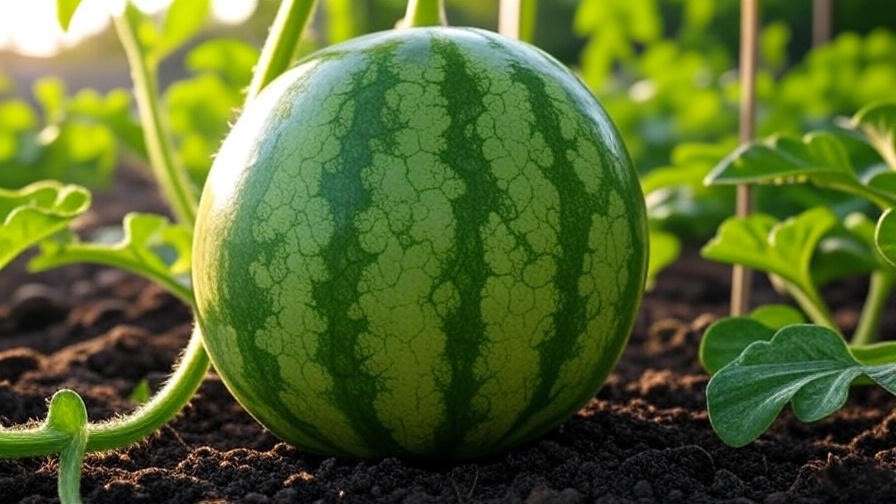Imagine slicing into a juicy, vibrant diamond watermelon, its crisp, sweet flesh sparkling under the summer sun—a true gem of your garden! This stunning variety, known for its dark green rind and delectable flavor, is a favorite among home gardeners and plant enthusiasts. Whether you’re a seasoned grower or a curious beginner, mastering the art of growing diamond watermelons can transform your backyard into a bountiful oasis. In this comprehensive guide, we’ll walk you through every step to cultivate healthy, thriving diamond watermelon plants. Backed by decades of horticultural expertise and insights from agricultural research, this article will equip you with the knowledge to grow these delicious fruits with confidence. Let’s dive in and make your garden shine! ✨
What Is a Diamond Watermelon? Understanding This Unique Variety 🍉
Origins and Characteristics
The diamond watermelon, scientifically known as a hybrid of Citrullus lanatus, is a standout variety prized for its striking appearance and robust growth. Developed through selective breeding, this hybrid boasts a dark green rind with subtle yellow stripes, earning its “diamond” moniker due to its glossy, jewel-like sheen. Typically weighing 10–20 pounds, diamond watermelons have crisp, red-tinged flesh and a high sugar content, making them a favorite for fresh eating. Their disease-resistant traits, particularly against fusarium wilt, make them a reliable choice for gardeners across USDA hardiness zones 3–11.
Nutritional Benefits and Uses
Beyond their beauty, diamond watermelons pack a nutritional punch. Rich in vitamins A and C, antioxidants like lycopene, and hydrating electrolytes, they’re a healthy addition to any diet. A single serving can provide up to 20% of your daily vitamin C needs, supporting immune health and skin vitality. In the kitchen, these watermelons shine in salads, smoothies, or as a refreshing snack. Their vibrant color also makes them a decorative centerpiece for summer gatherings. Fun fact: The “diamond” name not only reflects their aesthetic but also their value as a high-yield crop for gardeners.
Preparing to Grow Diamond Watermelons: Getting Started 🌞
Choosing the Right Location
To grow thriving diamond watermelons, start with the perfect spot. These sun-loving plants require 6–8 hours of direct sunlight daily to fuel photosynthesis and fruit development. Choose a south-facing area with ample space, as each vine can spread 6–10 feet. Soil is equally critical: diamond watermelons thrive in well-draining, loamy soil with a pH of 6.0–6.8. Test your soil using a home kit or consult your local agricultural extension for precise analysis. If drainage is an issue, consider raised beds to prevent root rot.
Selecting Quality Seeds or Seedlings
High-quality seeds are the foundation of a successful harvest. Purchase diamond watermelon seeds from reputable suppliers like Burpee or Johnny’s Selected Seeds, ensuring they’re labeled as disease-resistant hybrids. Hybrid varieties, like the popular ‘Black Diamond,’ offer consistent yields and resilience, while heirloom options may appeal to organic purists but require extra care. If starting with seedlings, inspect for firm stems and vibrant leaves. Expert tip: Look for seeds certified by agricultural research programs to guarantee genetic purity and vigor.
Timing Your Planting
Timing is everything when growing diamond watermelons. Plant in late spring after the last frost, when soil temperatures reach at least 70°F (21°C). In colder climates (zones 3–5), wait until early summer to ensure warm conditions. For warmer zones (8–11), you may plant earlier, but avoid excessive heat above 90°F during flowering. Use a soil thermometer for accuracy, as cold soil can stunt germination. Pro insight: Stagger planting every two weeks for a continuous harvest throughout the season.
Step-by-Step Guide to Planting Diamond Watermelons 🌱
Preparing the Soil
Healthy soil sets the stage for vibrant plants. Begin by testing your soil’s pH and nutrient levels, amending with organic compost or well-rotted manure to boost fertility. A balanced fertilizer (10-10-10 NPK) applied at 1 pound per 100 square feet provides essential nutrients. Create raised mounds or beds, 6–8 inches high, to improve drainage and warm the soil. Avoid compacting the soil, as diamond watermelon roots need room to expand. Expert advice: Incorporate 2–3 inches of organic matter to enhance soil structure and water retention.
Planting Seeds or Seedlings
You can grow diamond watermelons by direct sowing or transplanting seedlings. For direct sowing, plant seeds 1 inch deep, spacing them 3–4 feet apart in rows 6–8 feet apart. If using seedlings, harden them off for 7–10 days to acclimate to outdoor conditions. Dig a hole slightly larger than the root ball, place the seedling, and water thoroughly. Keep the soil consistently moist but not waterlogged during germination (7–10 days). Pro tip: Cover seeds with a thin layer of vermiculite to retain moisture and improve germination rates.
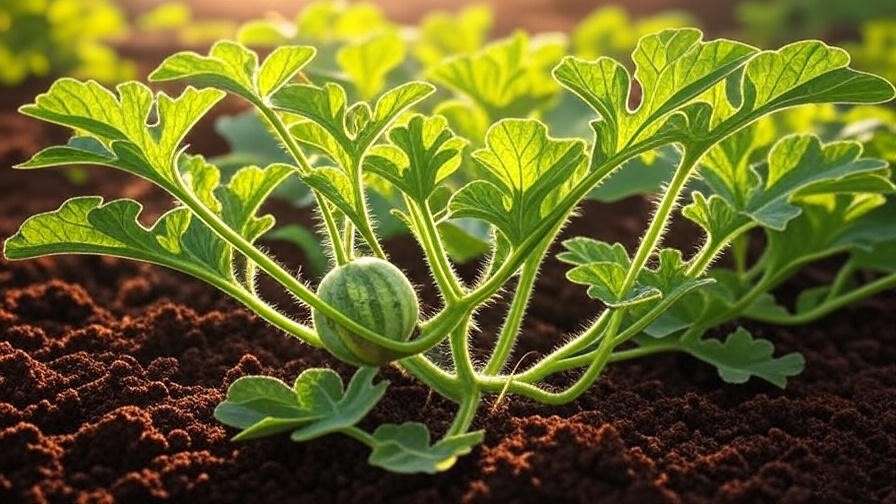
Mulching for Success
Mulching is a game-changer for watermelon cultivation. Apply a 2–3 inch layer of organic mulch, such as straw or wood chips, to retain moisture, suppress weeds, and regulate soil temperature. Alternatively, black plastic mulch can warm the soil and accelerate growth in cooler climates. Apply mulch after seedlings establish to avoid fungal issues like damping-off. Expert insight: If using plastic mulch, ensure proper irrigation beneath to prevent drought stress.
Caring for Diamond Watermelon Plants: Essential Tips 💧
Watering Requirements
Diamond watermelons are thirsty plants, requiring 1–2 inches of water per week, depending on rainfall. Deep, infrequent watering encourages strong root systems, so aim for one thorough session every 4–5 days. Use drip irrigation or a soaker hose to target the root zone and avoid wetting foliage, which can invite disease. Monitor for yellowing leaves (overwatering) or wilting (underwatering) to adjust your schedule. Pro tip: Reduce watering slightly during fruit ripening to enhance sweetness.
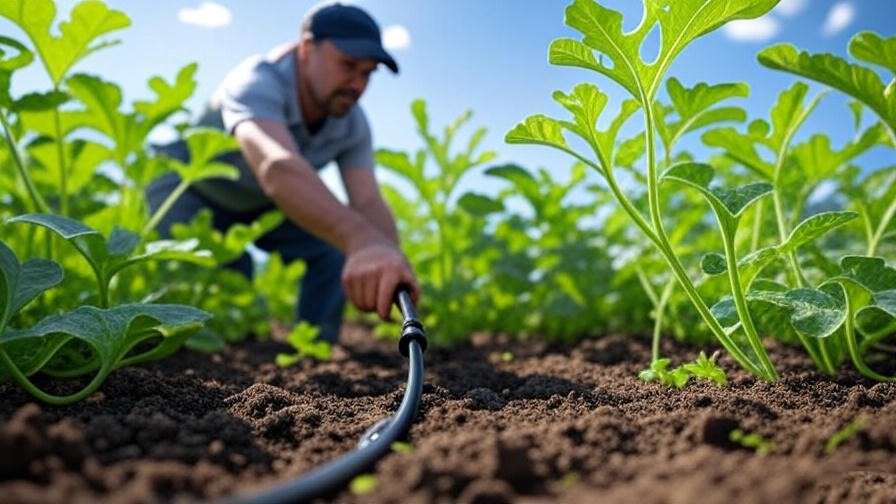
Fertilizing for Optimal Growth
Fertilizing correctly ensures robust vines and juicy fruits. Apply a nitrogen-heavy fertilizer (e.g., 20-10-10) during early growth to promote leafy development. Once flowering begins, switch to a phosphorus- and potassium-rich blend (5-10-10) to support fruit formation. Organic gardeners can use compost tea or fish emulsion every 2–3 weeks. Avoid over-fertilizing, as excess nitrogen can lead to lush vines but small fruits. Expert advice: Test soil nutrient levels mid-season to fine-tune your approach.
Pruning and Training Vines
Pruning enhances air circulation and directs energy to fruit production. Remove secondary vines and suckers (small shoots) once the main vine produces 2–3 fruits. Use clean, sharp shears to avoid spreading disease. For space-constrained gardens, train vines onto a sturdy trellis, supporting heavy fruits with fabric slings. Pro insight: Limit each plant to 2–3 fruits for larger, sweeter watermelons.
Protecting Diamond Watermelons from Pests and Diseases 🐞
Common Pests to Watch For
Diamond watermelon plants can attract pests like aphids, cucumber beetles, and spider mites, which can damage leaves and reduce yields. Aphids suck plant sap, causing leaves to curl, while cucumber beetles can transmit bacterial wilt. Spider mites thrive in hot, dry conditions, leaving fine webbing on leaves. To manage these organically, apply neem oil or insecticidal soap weekly, targeting the undersides of leaves. Companion planting with marigolds or nasturtiums can deter pests naturally. Expert tip: Use floating row covers for young plants, removing them during flowering to allow pollination. Regular inspections, especially early in the season, help catch infestations before they spread.
Diseases and How to Prevent Them
Common diseases affecting diamond watermelons include powdery mildew, anthracnose, and fusarium wilt. Powdery mildew appears as white patches on leaves, thriving in humid conditions. Anthracnose causes dark, sunken spots on fruits and stems. Fusarium wilt, a soil-borne fungus, leads to wilting vines. Prevent these by ensuring proper spacing (3–4 feet between plants) for air circulation and practicing crop rotation every 2–3 years. If needed, apply organic fungicides like sulfur for mildew or copper-based sprays for anthracnose. Pro insight: Choose disease-resistant varieties like ‘Black Diamond’ and maintain soil health with compost to boost plant immunity.
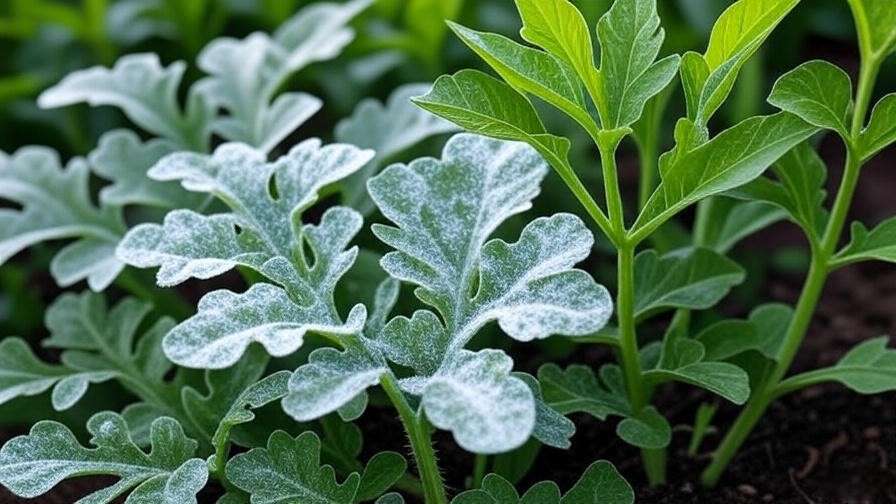
When and How to Harvest Diamond Watermelons 🍈
Signs Your Watermelon Is Ready
Knowing when to harvest is key to enjoying sweet, ripe diamond watermelons. Look for these signs: a yellowing belly where the fruit rests on the ground, a dull rind that loses its glossy sheen, and a drying tendril closest to the fruit. The classic “thump test” can help—tap the watermelon and listen for a deep, hollow sound, indicating ripeness. Most diamond watermelons take 70–90 days from planting to mature, depending on the variety and growing conditions. Expert advice: Check multiple indicators to avoid harvesting too early, as unripe watermelons won’t continue to ripen off the vine.
Harvesting Techniques
Harvest with care to preserve fruit quality. Use clean, sharp pruning shears to cut the stem about 2 inches above the fruit, avoiding tearing or twisting. Handle gently to prevent bruising, which can reduce shelf life. After harvesting, store diamond watermelons in a cool, dry place (50–60°F) for up to 2–3 weeks. For longer storage, avoid stacking fruits to prevent pressure damage. Pro tip: Rinse the fruit lightly to remove dirt, but avoid soaking to prevent fungal growth during storage.
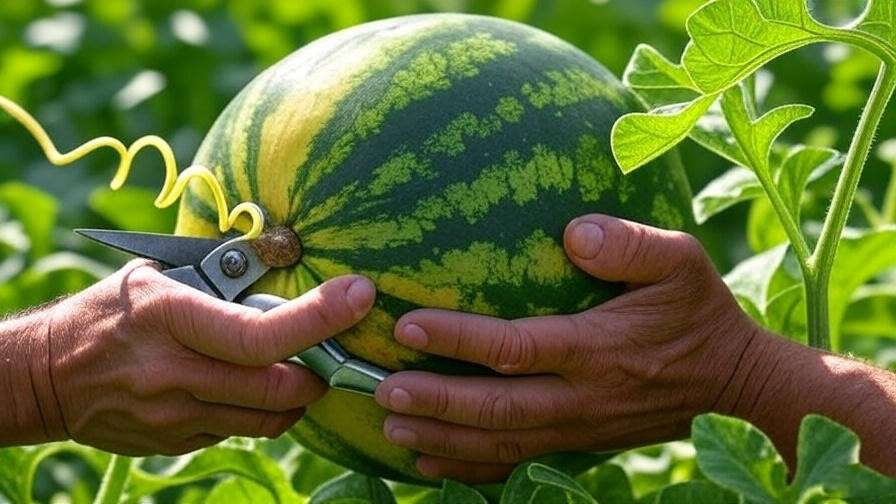
Troubleshooting Common Diamond Watermelon Problems ⚠️
Why Isn’t My Plant Producing Fruit?
If your diamond watermelon plant isn’t fruiting, several factors could be at play. Poor pollination, often due to limited bee activity, is a common culprit. To address this, hand-pollinate by gently transferring pollen from male flowers (thin-stemmed) to female flowers (with a small bulb at the base) using a small brush or cotton swab. Nutrient imbalances, such as excess nitrogen, can lead to lush vines but no fruit—switch to a low-nitrogen fertilizer during flowering. Insufficient sunlight (less than 6 hours daily) can also hinder fruit set. Expert solution: Attract pollinators by planting bee-friendly flowers like lavender nearby.
Dealing with Stunted Growth or Small Fruits
Stunted growth or undersized fruits often result from overcrowding, water stress, or pest damage. Ensure plants are spaced 3–4 feet apart to avoid competition for nutrients and light. Inconsistent watering can cause small or misshapen fruits, so maintain a steady schedule of 1–2 inches per week. Pests like aphids or diseases like powdery mildew can sap plant energy, leading to poor growth. Inspect plants weekly and address issues promptly with organic controls. Pro insight: Thin each plant to 2–3 fruits to focus energy on producing larger, sweeter watermelons.
Expert Tips for Maximizing Your Diamond Watermelon Yield 🌿
To elevate your harvest, try these advanced strategies:
- Companion Planting: Pair diamond watermelons with beans or corn, which fix nitrogen in the soil and support growth. Avoid planting near potatoes, which compete for nutrients.
- Succession Planting: Stagger planting every 2–3 weeks for a continuous harvest, especially in warmer climates with long growing seasons.
- Reflective Mulch: Use silver or reflective mulch to increase sunlight exposure, boosting photosynthesis and potentially increasing fruit size by 10–20%.
Expert insight: Rotate crops annually and incorporate cover crops like clover in the off-season to replenish soil nutrients naturally.
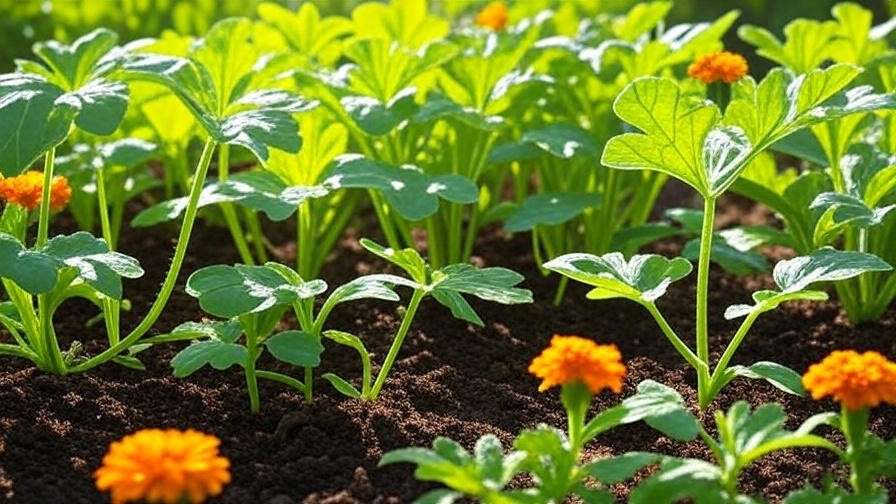
FAQs About Growing Diamond Watermelons ❓
- How long does it take to grow a diamond watermelon?
Most varieties mature in 70–90 days, depending on weather, soil, and care. Check seed packets for specific timelines. - Can I grow diamond watermelons in containers?
Yes, use large containers (20+ gallons) with well-draining soil and a trellis to support vines. Ensure consistent watering and full sun. - What’s the best fertilizer for diamond watermelons?
Start with a balanced 10-10-10 fertilizer, then switch to 5-10-10 during fruiting to promote larger, sweeter fruits. Organic options like fish emulsion work well. - How do I know if my watermelon is sweet?
A high leaf-to-fruit ratio and proper ripening (yellow belly, hollow thump) ensure sweetness. For precision, use a refractometer to measure sugar content (aim for 10–12% Brix).
Conclusion
Growing stunning diamond watermelons is a rewarding journey that combines science, patience, and a touch of artistry. By choosing the right location, preparing nutrient-rich soil, providing consistent care, and protecting your plants from pests and diseases, you’ll be slicing into juicy, homegrown fruits in no time. This guide, informed by decades of horticultural expertise and research from sources like the USDA and university extension programs, empowers you to cultivate a thriving garden. Start planting today, share your progress with #DiamondWatermelonGrow, and savor the joy of harvesting your own vibrant, delicious watermelons! 🌱

